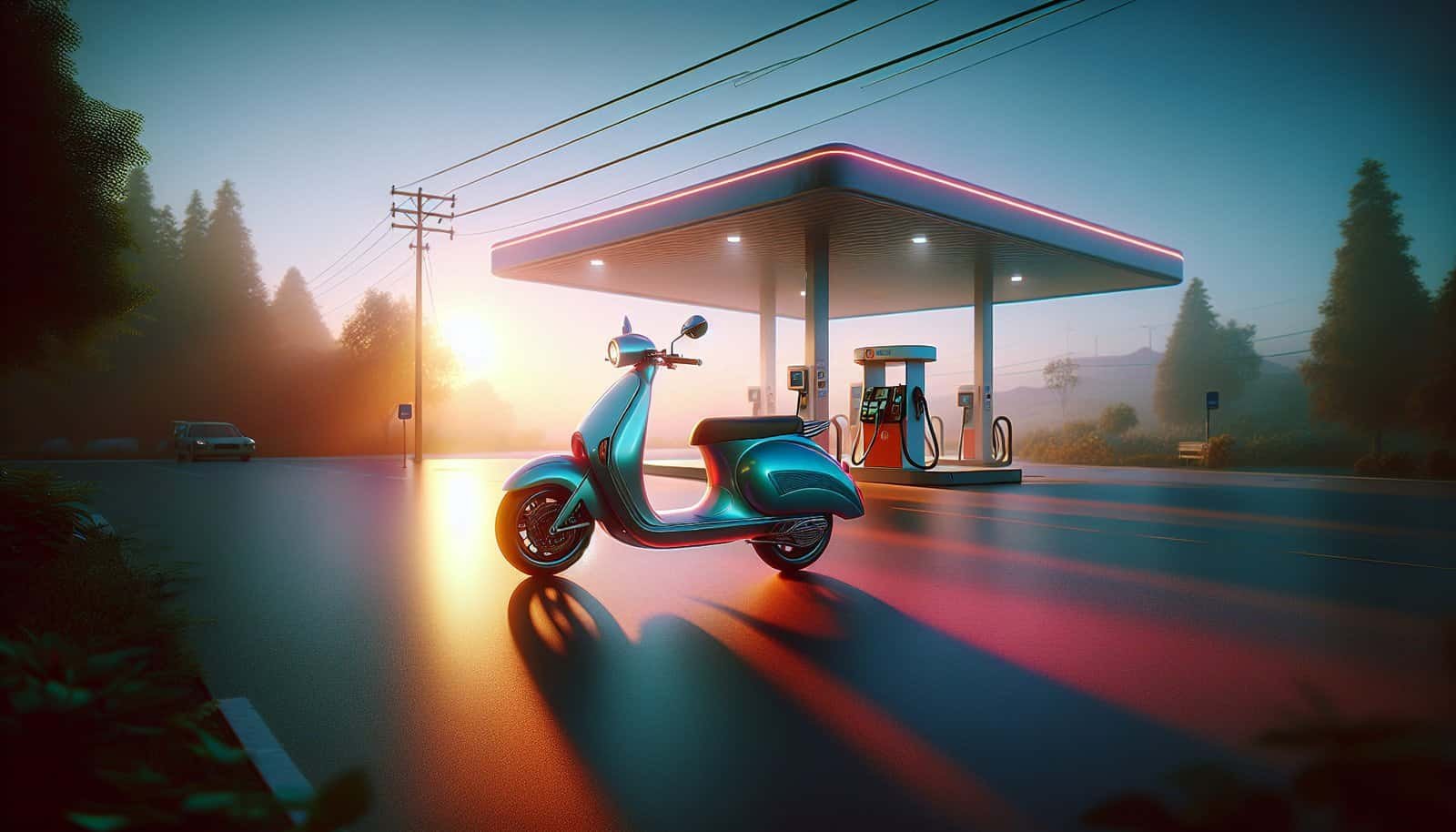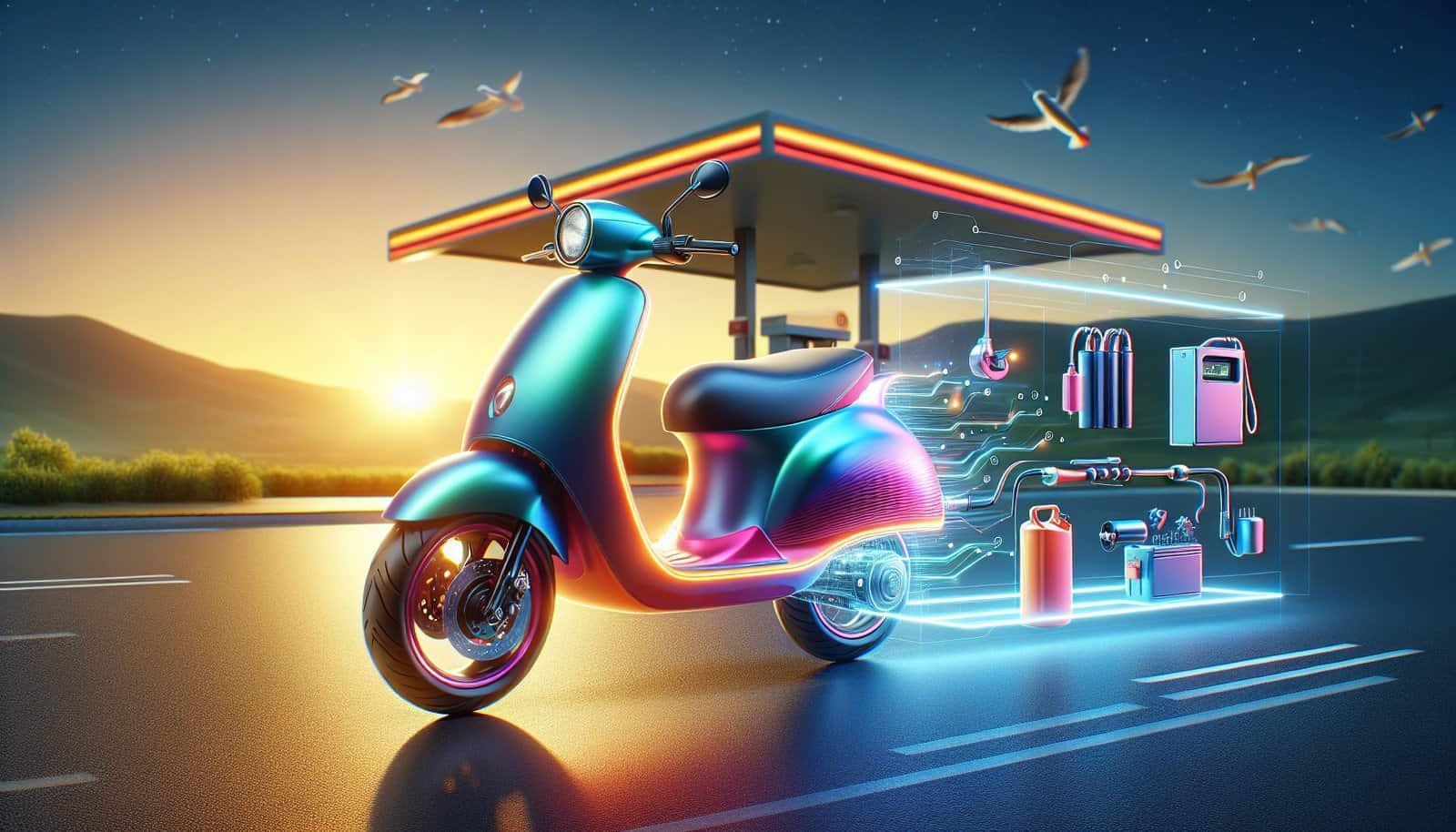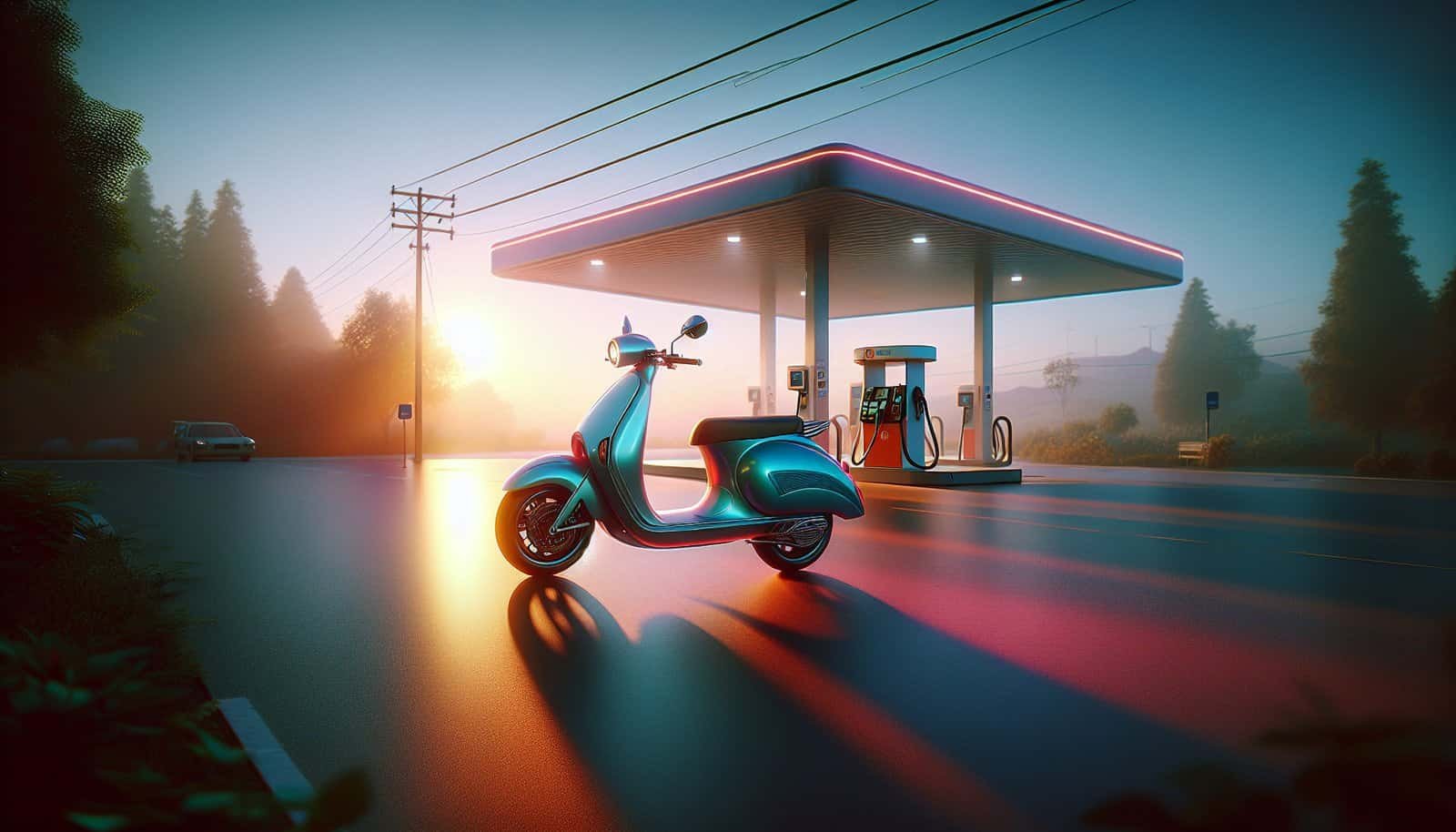Have you ever wondered if it is possible to transform your regular scooter into an electric one? Well, the good news is that retrofitting your scooter to make it electric is indeed a possibility! By doing so, you can enjoy the benefits of an eco-friendly mode of transportation without having to invest in an entirely new vehicle. In this article, we will explore the options and steps involved in retrofitting your regular scooter to make it electric, empowering you to make a decision that is both economical and environmentally conscious.
Benefits of Electric Scooters
Electric scooters offer a range of benefits that make them a popular choice for many individuals. One of the key advantages is their eco-friendliness. Electric scooters produce zero emissions, helping to reduce air pollution and combat climate change. By opting for an electric scooter over a traditional gasoline-powered scooter, you can contribute to a cleaner and greener environment.
Another significant benefit of electric scooters is their lower maintenance costs. Compared to gasoline-powered scooters, electric scooters have fewer moving parts and require less maintenance. There is no need for frequent oil changes, spark plug replacements, or carburetor cleanings. This not only reduces the amount of time and effort required for maintenance but also saves you money in the long run.
Electric scooters are also known for their quiet operation. With an electric motor, you can enjoy a peaceful and noise-free ride. This can be particularly advantageous for individuals living in urban areas or those who prioritize a quiet and peaceful experience. Not only is this more enjoyable for the rider, but it also helps to minimize noise pollution in communities.
Considerations Before Retrofitting
Before you dive into retrofitting your regular scooter to make it electric, there are several important considerations to keep in mind. First and foremost, it’s essential to familiarize yourself with the legal requirements pertaining to electric scooters in your area. Different regions have varying regulations regarding electric scooters, including their usage, speed limits, and safety standards. Understanding these legal requirements ensures that you comply with the law and avoid any potential issues.
Budget and cost analysis is another crucial aspect to consider before retrofitting your scooter. Converting a regular scooter to an electric one involves an investment. You’ll need to budget for the cost of the conversion kit, as well as any additional tools or equipment required. It’s important to assess your financial situation and determine if the retrofitting process aligns with your budget.
Technical feasibility is yet another consideration that cannot be overlooked. Not all scooters may be suitable for conversion, depending on their structure, compatibility, and other factors. Before proceeding, it’s advisable to consult experts or professionals who can evaluate the technical feasibility of retrofitting your specific scooter model.

Choosing a Conversion Kit
Choosing the right conversion kit is a crucial step in the retrofitting process. Several factors come into play when selecting a conversion kit for your scooter. Hub motor kits are a popular choice as they provide a convenient and efficient way to convert your scooter to electric. These kits typically include a hub motor that replaces the existing wheel hub, making installation relatively straightforward.
Battery and controller options are also essential considerations. The battery is a crucial component of an electric scooter, and the choice of battery affects the scooter’s range and performance. It’s crucial to select a battery that matches your desired range and has a suitable capacity. Additionally, the controller is responsible for managing the power flow to the motor and other electrical components, so choosing a reliable and efficient controller is essential.
When choosing a conversion kit, it’s important to consider the wiring and connectors. Ensure that the kit includes all the necessary wiring harnesses and connectors, and that they are compatible with your scooter’s existing wiring system. Proper wiring and connectors are critical for the safe and efficient operation of an electric scooter.
Preparing Your Scooter for Conversion
Before installing the conversion kit, there are a few steps you need to take to prepare your scooter. Firstly, gather all the necessary tools as recommended by the conversion kit manufacturer. These may include wrenches, screwdrivers, pliers, and other common tools.
Next, you’ll need to remove existing components that are no longer required. This typically involves disconnecting the gasoline engine, fuel tank, exhaust system, and other related parts. Ensuring that all components are carefully removed and stored properly will make the installation process smoother.
While preparing your scooter for conversion, it’s advisable to inspect the scooter structure for any signs of damage or wear. Pay attention to the frame, suspension, and other structural components to ensure that they are in good condition. Repair any damages or weak points before proceeding with the conversion to ensure a solid and safe foundation for your electric scooter.

Installing the Conversion Kit
Once your scooter is prepared, it’s time to install the conversion kit. Start by mounting the hub motor onto the scooter’s rear wheel hub. Follow the manufacturer’s instructions carefully to ensure a secure and proper installation. This step may involve removing and replacing the existing wheel, so take your time to ensure everything is aligned correctly.
After mounting the hub motor, connect the battery and controller to the scooter. It’s important to follow the provided wiring diagrams and instructions precisely to avoid any electrical issues. Take care to connect the positive and negative terminals correctly and secure all connections to prevent any loose or exposed wiring.
Once the battery and controller are connected, proceed with the wiring and electrical setup. This involves routing and connecting the various wires and cables as per the manufacturer’s instructions. Take your time to organize the wiring neatly and ensure that all connections are secure and insulated.
Safety Precautions
When retrofitting your scooter to make it electric, it’s crucial to prioritize safety. Wear appropriate protective gear such as a helmet, knee pads, and elbow pads to minimize the risk of injuries. Electric scooters may reach high speeds, and protective gear can offer essential protection in case of an accident.
Always adhere to the manufacturer’s instructions and guidelines for installation and operation. These instructions are provided to ensure the safe and efficient functioning of the conversion kit. Failure to follow these instructions could lead to performance issues or even safety hazards.
Before taking your converted scooter out for a ride, perform thorough testing to ensure that all components are working correctly. Check for any potential issues or malfunctions and address them before using the scooter on public roads or pathways. It’s better to be safe and thorough during the testing phase to prevent any unforeseen problems during actual usage.

Legal and Regulatory Considerations
Before hitting the road with your converted electric scooter, it’s essential to check the local laws and regulations regarding electric scooters. Different areas may have specific rules and requirements for electric scooters, including speed limits, helmet laws, and where they are permitted to be ridden. Familiarize yourself with these regulations to avoid any legal troubles.
Registering your converted scooter may also be necessary depending on the local regulations. Contact the appropriate authorities to understand the registration process and requirements. Additionally, you may need to obtain permits or licenses to operate your electric scooter legally. Ensure that you have all the necessary documentation and permits to avoid any legal complications.
Maintenance and Upkeep
To ensure the longevity and optimal performance of your electric scooter, regular maintenance is essential. Battery checks and charging should be conducted on a scheduled basis. Keep an eye on the battery’s charge level and perform routine checks to ensure it is functioning properly. Follow the manufacturer’s recommendations for charging and storage to maximize the battery’s lifespan.
Inspecting and maintaining the electrical components is another important aspect of scooter maintenance. Check all wiring and connectors for any signs of wear or damage, and repair or replace them as necessary. Regularly clean and lubricate electrical contacts to ensure proper conductivity. Performing these routine maintenance tasks will help prevent unexpected breakdowns and prolong the lifespan of your scooter.
Routine cleaning and upkeep of your electric scooter are also important. Keep the scooter clean and free from dirt, dust, and debris. Regularly inspect the tires, brakes, and other mechanical components for wear or damage. Cleaning the scooter after rides in wet or dirty conditions can help prevent corrosion and ensure optimal performance.

Performance and Range
Understanding the motor power and torque of your electric scooter is crucial for assessing its performance. Higher motor power generally results in better acceleration and climbing abilities. Torque is important for maintaining speed on inclines or rough terrain. Consider your specific needs and preferences when selecting a conversion kit to ensure that the motor power and torque align with your requirements.
Calculating the expected range of your electric scooter is also important. The range depends on factors such as battery capacity, weight of the scooter and rider, terrain, and speed. It’s advisable to consult the manufacturer’s specifications and user reviews to get an idea of the expected range. Understanding the range will help you plan your rides and ensure that the scooter meets your specific needs.
Various factors can impact the performance of your electric scooter. These include rider weight, terrain, weather conditions, and battery health. Heavier riders may experience reduced acceleration and range compared to lighter riders. Hilly terrain or rough surfaces can also impact the scooter’s performance. Being aware of these factors and adapting your usage accordingly will help you get the most out of your electric scooter.
Conclusion
Retrofitting your regular scooter to make it electric can offer numerous benefits, from eco-friendliness and lower maintenance costs to quiet operation. However, it’s crucial to consider various factors such as legal requirements, budget, and technical feasibility before proceeding with the conversion. Choosing the right conversion kit, preparing your scooter properly, and installing the kit carefully are key steps in the retrofitting process. Adhering to safety precautions, legal and regulatory considerations, and regular maintenance will ensure a safe and enjoyable electric scooter experience. By understanding performance and range factors, you can select the appropriate conversion kit that meets your specific needs. Retrofitting your scooter to go electric can be a rewarding and environmentally conscious endeavor, allowing you to experience the benefits of electric transportation firsthand.


